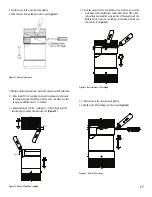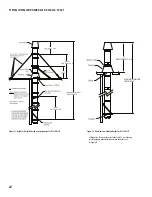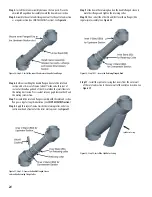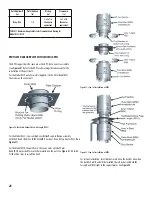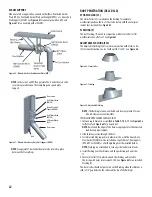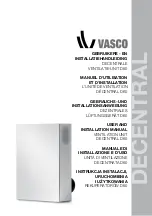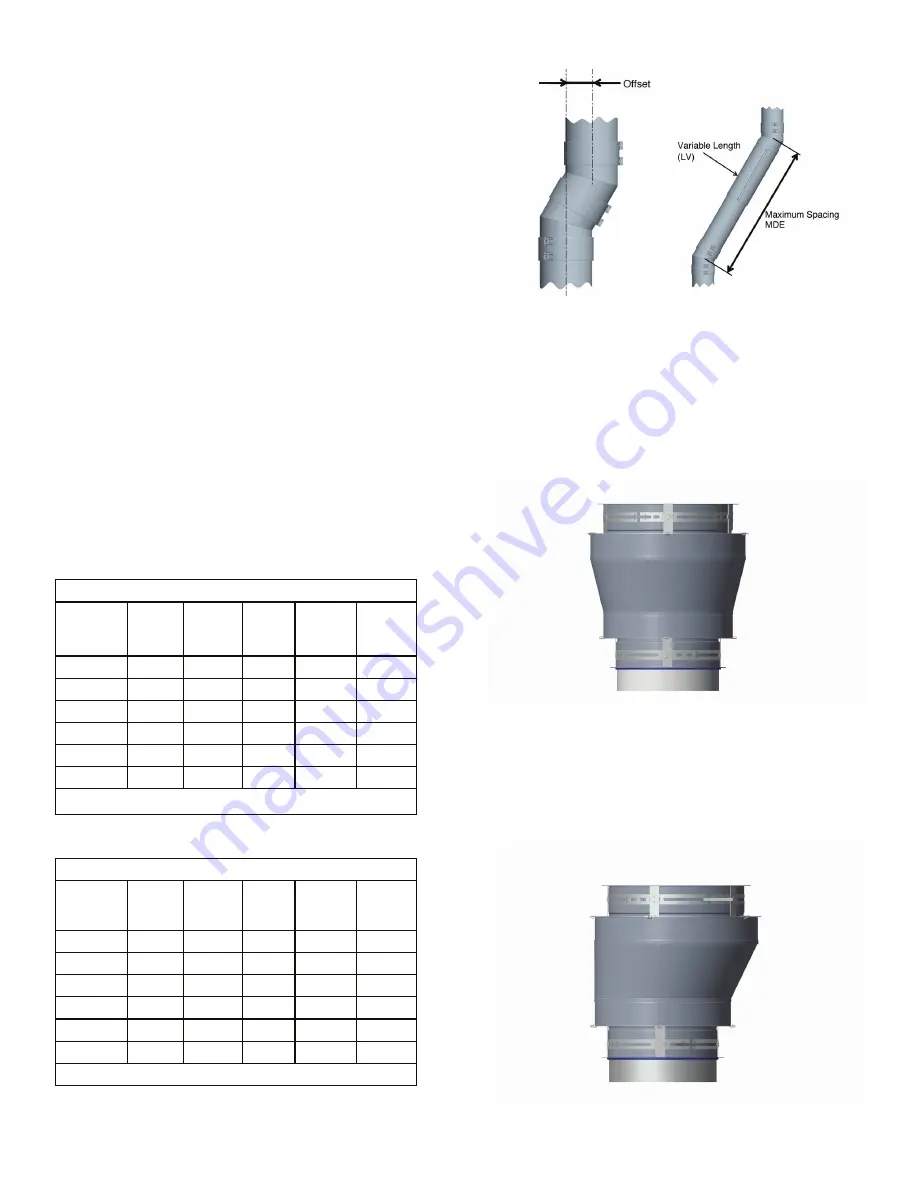
26
OFFSETS (DSLS-DSLD)
1. The length of the offset is determined by strength considerations. The
maximum dimension between supports is given in
Table 7 & 8
, and is
applicable to all horizontal and sloped orientations. See
Figure 44.
2. The minimum offset is accomplished with two elbows dircectly
connected to each other (see
Figure 43 and Table 15 & 16)
.
3. With frequent re-support, there is no structural or operating limit to the
length of horizontal or sloped portions, providing the system meets
the capacity, pressure drop of available equipment.
4. The carrying capacity of supports and their structural attachments must
take into account the weight of the offset plus whatever vertical section
is carried by that support.
5. Height limits for supports are tabulated in
Table 6
.
6. The vertical sections above the offset must also be supported or
anchored and guided where necessary.
7. Anchor Plate Wall Support (WSHD) and Wall Guide (WGHD) may be
used in a varitey of ways for offset support to achieve the structural
stability of the system.
8. Re-supports must be securely anchoredtowalls, posts, or locally
fabricated rigid framework. This framework must be designed to assure
stability of supports, such as Ventilated anchor Plate (APV) supports and
Heavy Duty Wall Supports (WSHD).
9. Supports suspended by threaded rods or from small size angles or straps
are usually not satisfactory to resist bending moments due to offsets
Figure 44: Maximum Spacing
between supports for Offset
ADAPTERS (DSLS-DSLD)
TAPERED INCREASER (TIN0)
The Tapered Increaser Adapter is used for a diameter change in duct
system. Uses when there is a sufficient length for duct run available for the
size change. The TIN0 is used uses 2” of length per 1 “increment diameter
change. The TIN0 is considered to have the same load strength as a
straight duct. See
Figure 45.
Figure 45: Tapered Increaser Adapter (TIN0)
ECCENTRIC TAPERED INCREASER (ETIN0)
The Eccentric Tapered Increaser Adapter is similar as the Tapered Increaser
Adapter except the smaller diameter is offset from the larger diameter.
When installed horizontally, the ETIN0 keep a flat slope unlike the TIN0.
See
Figure 46.
Figure 46: Eccentric Tapered Increaser (ETIN0)
Figure 43: Minimum Offset for each Elbows
DSLS
Flue Diameter
Ø (in.)
3°
15°
30°
45°
90°
26
3/8
2 5/8
6 7/8
12 7/16
34 1/4
28
3/8
2 11/16
7 1/8
13
36 1/4
30
3/8
2 3/4
7 3/8
13 9/16
38 1/4
32
3/8
2 7/8
7 5/8
14 1/8
40 1/4
34
3/8
2 15/16
7 15/16
14 3/4
42 1/4
36
3/8
3
8 3/16
15 5/16
44 1/4
TABLE 15 - Minimum Offset for Each Elbow - DSLS
Dimensions are in inches
DSLD
Flue Diameter
Ø (in.)
3°
15°
30°
45°
90°
26
1/2
3 1/4
8 1/8
14 3/8
39 1/2
28
1/2
3 1/4
8 3/8
14 7/8
41 1/2
30
1/2
3 3/8
8 5/8
15 1/2
43 1/2
32
1/2
3 3/8
8 7/8
16 1/8
45 1/2
34
1/2
3 1/2
9 1/8
16 3/4
47 1/2
36
1/2
3 1/2
9 1/2
17 1/4
49 1/2
TABLE 16- Minimum Offset for Each Elbow - DSLD
Dimensions are in inches
Table 7 & 8






